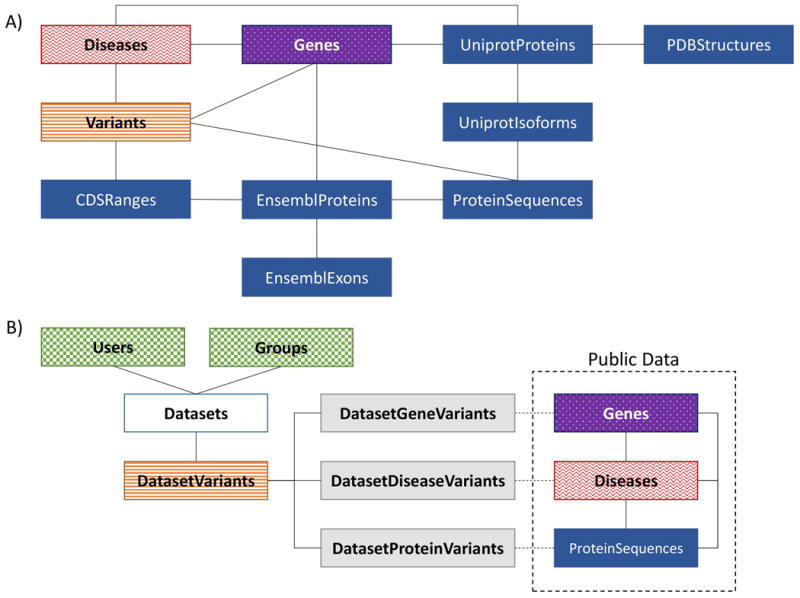Figure 1.

A) Public database design – a simplified design of the public HUMA database. The database is divided into four sections: proteins (blue/dark solid), variants (orange/horizontal stripes), diseases (red/waves), and genes (purple/dotted). B) Private database design – private data is stored in a separate database. Public proteins, genes, and disease are linked to private variants (orange/horizontal stripes) during the mapping process when the variants are first uploaded. These links are stored in the “connector” tables (grey/light solid). Dataset (white) ownership and sharing is managed via the account tables (green/checkered).
